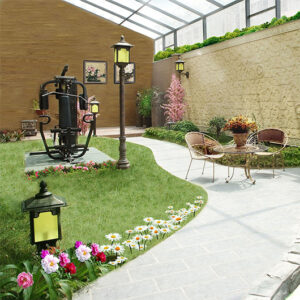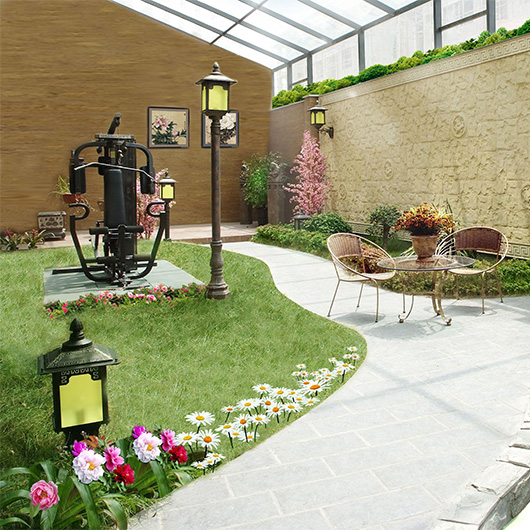How to solve the problem of water accumulation in the courtyard?
Lately, many cities in our country have been hit by incessant rain. Not only are we plagued by rain, but the courtyard is also filled with unwanted standing rainwater.
Rain accumulation can actually trigger a number of issues. As precipitation increases, some courtyards with poor drainage will definitely accumulate water. The result, on the one hand, is that too much water cannot be taken up by the plants, so that the accumulation of water causes many of them to die. On the other hand, unwanted water may have the opportunity to flow into nearby rooms. It can be a problem for cleaning and may further cause damage to the facilities inside the room.

Introduction of Courtyard Drainage Ideas
Three ways to drain your yard
When designing garden drainage, it is necessary to use the drainage design of the building designer as a basis to keep the roof drainage smooth. The general principle is this: according to the original direction and slope of the roof of the building, the water can be well drained away.
Courtyard Drainage systems can be divided into: swale drainage, underground drainage, and combined drainage systems.
Drainage through low-lying areas
A hollow in the garden will not only drain the water, but also slow down water penetration into the ground to improve the groundwater environment. At the same time, planting flowers and trees around low-lying areas will make the place very beautiful and natural, so that it can be turned into a garden scene.
It will be seen that some grounds on which plants grow are higher than others. This design effectively prevents water from accumulating around the plant, which saves the life of the plant.
Underground Drainage
Underground drainage systems often have pipes and drainage pools, etc. When there is not enough space to treat the low-lying terrain, underground drainage systems are preferred.
One type of underground drainage is at the garden sewer entrance, which is connected to a larger pipe drainage system (these were buried in the ground before the garden was built and cannot be seen above ground).
In this way, a whole set of rainwater harvesting facilities can be designed. The drainage is quick with good results. But it can also be effective in preventing underground facilities or structures from returning to damp.
Combination of swale drainage and underground drainage
The combination method is a combination of swale and underground drainage. In this way, rainwater flows through the roof downspout, and was collected into the drainage pool (drainage Wells), and then water flows into the pipes for drainage.
The size of the garden and the amount of rainfall are the most critical factors in drainage design. Therefore, the choice of drainage method can be based on the conditions of the garden site and consultation with professionals.
With a bottomland or underground drainage system in place, there is no need to worry about garden drainage when the continuous rainy season arrives.
A Better Option for Courtyard Drainage-HOENSOEY Geocellular Attenuation Tank
The Geocellular Attenuation Tank is a new type of rainwater storage cell unit with ultra-high compression strength and a unique buckle. They are a core component in shallow surface water treatment systems and are the best option for underground drainage methods.
The HOENSOEY Geocellular Attenuation Tank performs better when dealing with water accumulation in the courtyard.
- First of all, there is no need to bury the HOENSOEY Geocellular Attenuation Tank before building the garden. The process of installment is quick and convenient, and can only be performed by hand, foot, and perhaps a small hammer.
- Second, there is no need to dig deep into the ground, meaning there is no damage to the surface of the ground.
- Third, the filters in the Geocellular Attenuation Tank can resist water debris flowing into the pipe, which can reduce pressure on the stormwater drain.
The HOENSOEY Geocellular Attenuation Tank addresses the problem of water accumulation in the courtyard and effectively protects plants from prolonged soaking.


